Image Archive


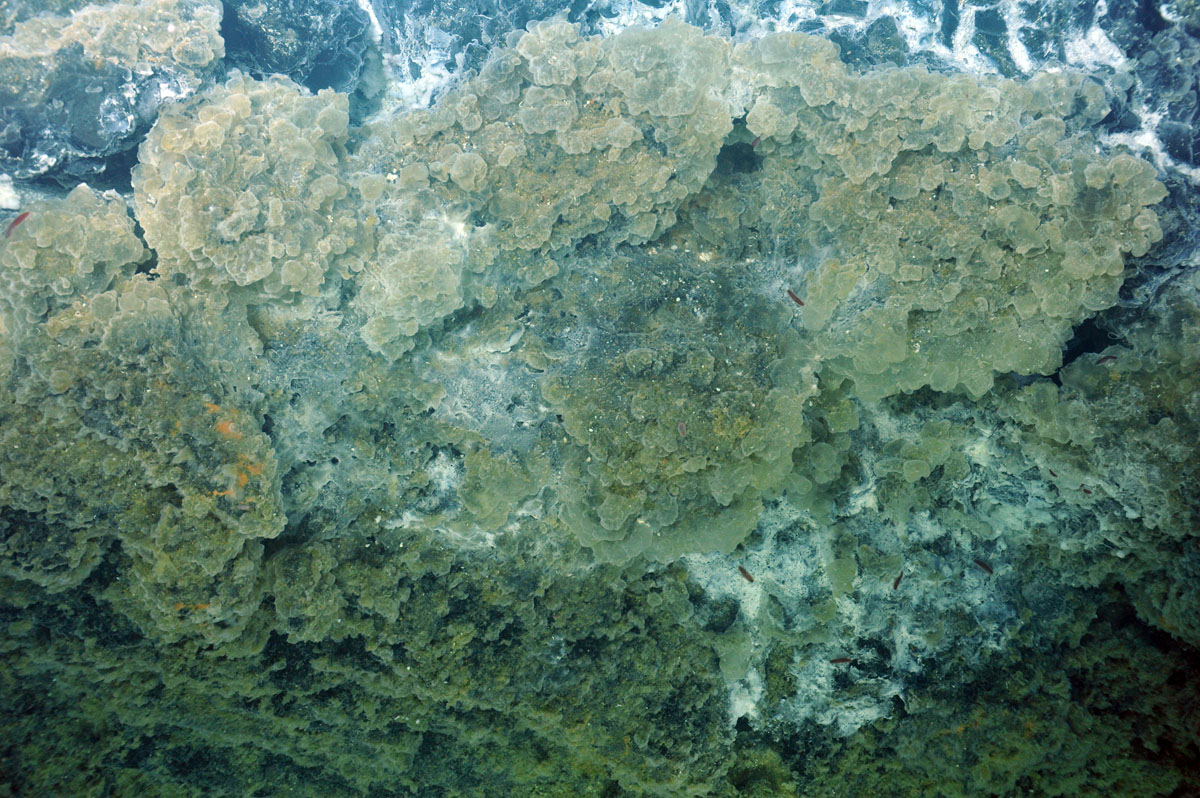




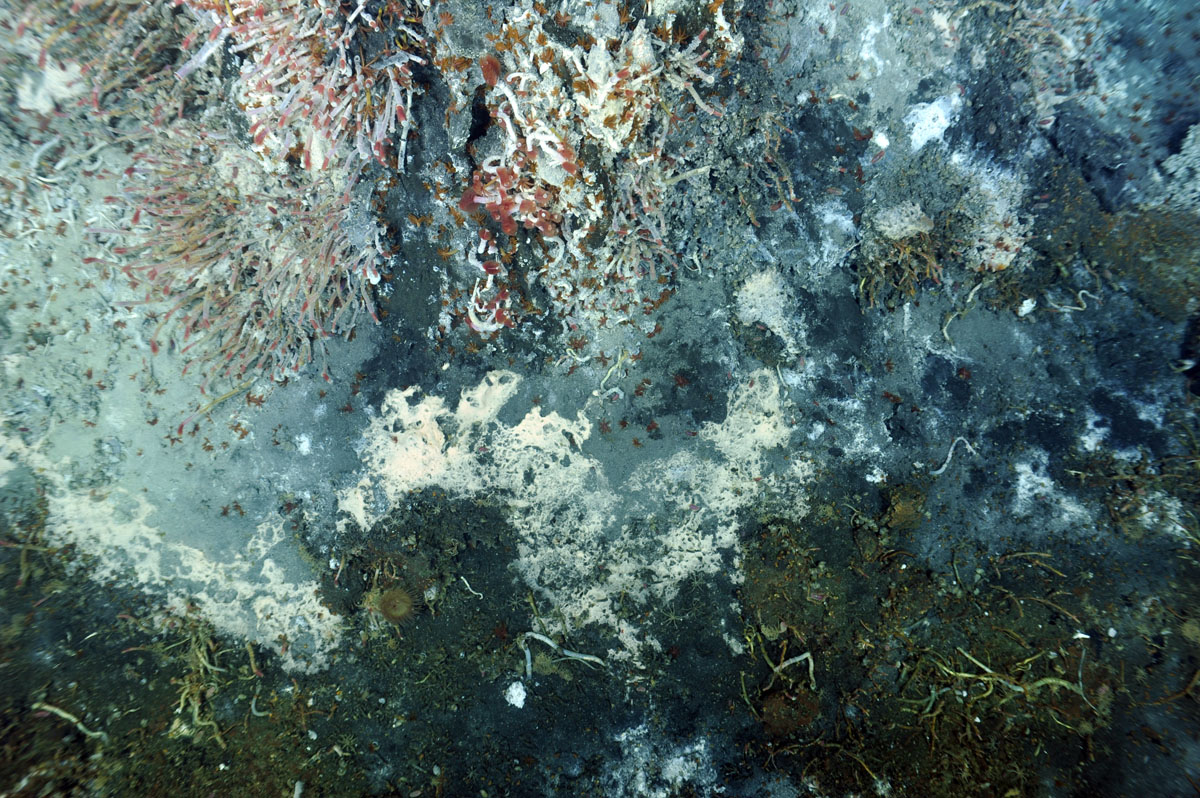





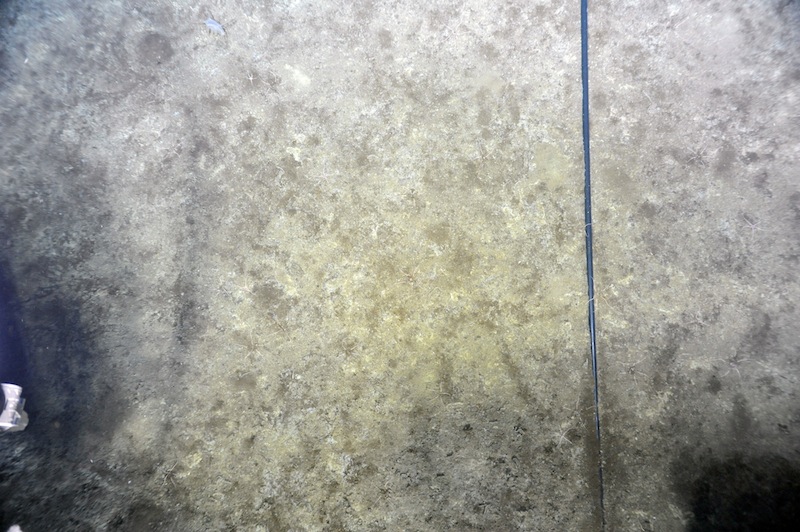


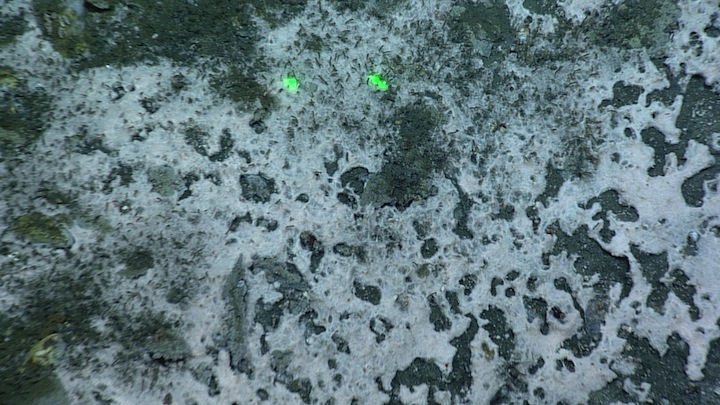
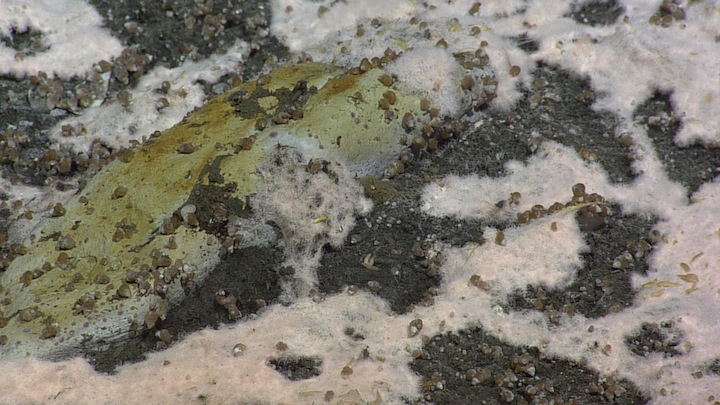



A close up view fo the edge of a snowblower vent billowing microbes and microbial produced material from the subseafloor. The biologically produced material and filamentous colonies of single-celled organisms coat the side and walls of a small collapse pit. Credit: UW/NSF-OOI/CSSF; ROPOS Dive R1472; V11.

This very glassy basalt was sampled from the April 2011 lava flow by ROPOS from the southeastern side of the caldera on Axial Seamount. The glass forms when the 1200°C melt meets 2°C seawater. Scientists on land will use the glass to date the sample and to study its geochemistry and gas content. Credit: M. Elend, University of Washington. V11.

Gelatinous biological communities form bulbous deposits within the Bag City venting area.

Small back smoker spigots on the summit of the black smoker structure called El Guapo in the International District hydrothermal field. which in 2011 was venting 350°C boiling fluids prior to the seafloor eruption in April 2011. Abundant sulfide worms colonize the young sulfide deposits. Credit: UW/NSF-OOI/CSSF; V11.

Filamentous bacteria coat the outer surfaces of the sulfide chimney called Castle in the International District Hydrothermal Field on the eastern side of the Axial Seamount caldera. Warm fluids emanate from a small vent beneath Castle, supporting the microbial communities.

This full-sized Junction Box frame was sucessfully deloyed and recovered in the International District Hydrothermal Field at Axial Seamount using the ROV ROPOS during the August 2011 VISIONS '11 expedition. During the VISIONS'13 cruise two fully built out medium-power J-Boxes will be deployed here that will provide power and communications to extension cables and sensors deployed at the vent sites. The sensors will include a digital still camera, mass spectrometer, fluid and DNA samplers, bottom pressure and tilt sensor, a temperature-chlorinity probe to measure boiling fluids exiting the vents, and a short-period seismometer.

A small collapse zone north of the International District Hydrothermal Field showing characteristic bathtub rings and talus rubble that is the remanents of the roof.

The base of the small, 4 meter tall structure called Mushroom, is encased in a dense covering of tubeworms, palmworms, and limpets. Other life seen in this image includes a sea anemone, and "spiders of the deep" called pycnogonids.

Tube worms encased in dense mats of filmentous bacteria cover a portion of the Inferno black smoker in ASHES vent field.

A lava whorl in the surface of a sheet flow within the caldera of Axial Seamount.

Thick flow wrapped by the April eruption on the eastern wall of the caldera. Credit: UW/NSF-OOI/CSSF; V11.

The ROV ROPOS gently flew into a small collapse basin marked by pillars, arches and isolated columns of basalt. These areas form as lava drains out from deep lava pools. The surface of the lava lake or channel very rapidly cools as it interacts with near freezing seawater. As the lava drains out, the roof is not strong enough to maintain its weight, and collapses into a pile of talus. Credit: UW/NSF-OOI/CSSF; V11.

A small pillar marked by bathtub rings is encased by broken slabs of the sheet flow that erupted in April 2011.

The high power and high bandwidth fiber optic cable laid up the slope of Axial Seamount.

This down-looking image was taken to create an extremely detailed view of methane seeps at Southern Hydrate Ridge. The left portion of the image shows part of a large collapse zone. White areas are bacterial mats. Credit. M. Elend, University of Washington.

An active methane hydrate seep site at Southern Hydrate Ridge. Emanating out of the cavity in the sediments are bubbles from gas hydrate dissociation within the shallow sediments. Photo credit: NSF-OOI/UW/CSSF

Beggiatoa bacterial matting at Southern Hydrate Ridge. The green lasers are turned on for scale and are 10 cm apart.

Beggiatoa matting (white) at Southern Hydrate Ridge with small snails. Photo credit: NSF-OOI/UW/CSSF

The backbone interface assembly on the seafloor at Hydrate Ridge during the L3 engineering tests.

One of Evan Solomon's mosquitoes (a flow meter) deployed at Southern Hydrate Ridge August 14, 2011 with the ROV ROPOS.
- Anemone
- Animal
- Arthropod
- ASHES
- Axial
- Axial Base
- Axial Biology
- Axial Caldera
- Bacteria
- Basalt Lava
- BEP
- Biofouling
- biolgoy
- Biology
- Camds
- Camera
- Camhd
- Central Caldera
- Ciliates
- Cnidaria
- Coastal Biology
- Crab
- Deep Profiler Mooring
- Dive Highlights
- Eastern Caldera
- Echinoderms
- Endurance Array
- Engineering Team
- ENLIGHTEN 10
- Exploratorium
- Fish
- Geology
- HD Camera
- HPIES
- Hydrate Ridge
- Hydrates
- Hydrophone
- Hydrothermal Vents
- Illustration
- Inshore 80 Meters
- Instrument
- International District
- J-BOX
- Jason
- Jellyfish
- Junction Box
- K12
- Lava
- Mollusk
- Moorings
- Nodes
- Nudibranch
- Octopus
- OOI
- Oregon Offshore
- Oregon Offshore 600 m
- Oregon Shelf
- Oregon Slope Base
- People
- PN1B
- PN1D
- Polychaetes
- PPSDN
- Primary Node
- RASFL
- ROCLS
- ROPOS
- ROPOS Dives
- ROV Team
- RV Revelle
- RV Sikuliaq
- RV Thompson
- Salp
- Sample
- SC13
- Science Team
- Sea Cucumber
- Sea Star
- Sea Urchin
- Seafloor
- Seismometer
- Sensors
- Shallow Profiler Mooring
- Shark
- Shipboard
- Shore Station
- Slope Base
- Smoker
- Soft Coral
- Southern Hydrate Ridge
- Sponge
- Squid
- Students
- Students & Guest Participants
- Tmpsf
- Tubeworms
- VISIONS 11 Leg 1
- VISIONS 11 Leg 2
- VISIONS 11 Viewers
- VISIONS 13
- VISIONS 14
- VISIONS 15
- VISIONS 16
- VISIONS 17
- VISIONS 18
- VISIONS 20
- VISIONS 22
- VISIONS 23
- Visualization
